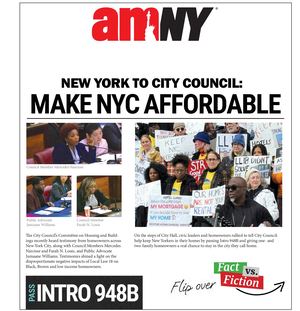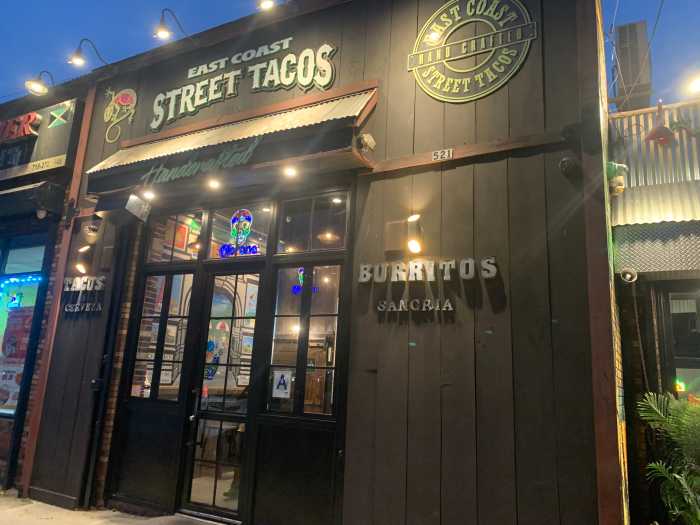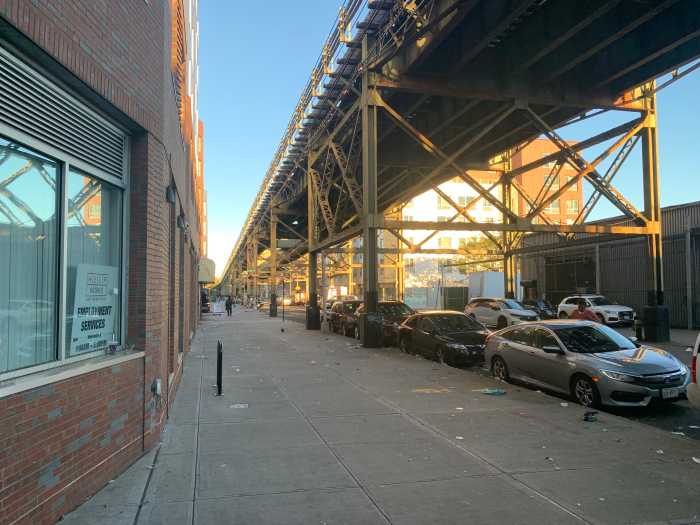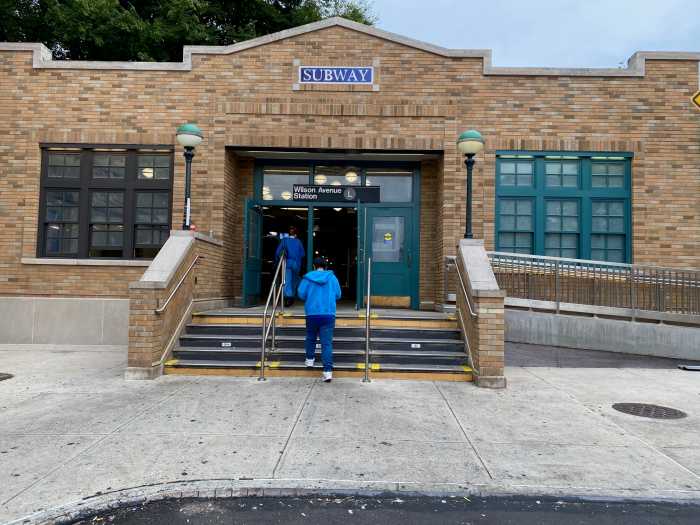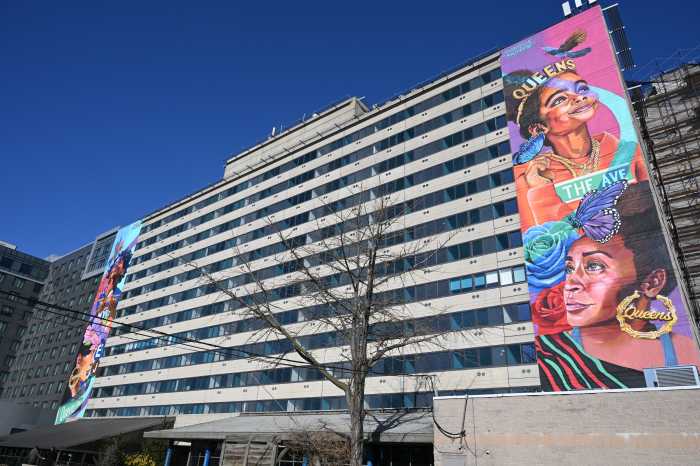Pressure was on the MTA Thursday night to end or change plans for the IBX in Queens, as a number of local residents claimed the nearly $6 billion light-rail is “not needed or wanted” in their neighborhoods.
Over 100 Middle Village and nearby residents filled seats inside Christ the King High School’s auditorium on Nov. 6 to voice their opinions on the project, which centers on the construction of a 14-mile light-rail that would have a direct connection from Queens to Brooklyn without touching Manhattan.
MTA representatives at the meeting said the train, which already entered its environmental review phase last month and is in design contract, will be beneficial for residents because it will provide fast and direct transit service between the two boroughs.
“We’ve noticed there is significant travel demand between and among Brooklyn and Queens,” said Jordan Smith, IBX project director, adding that environmental review is a milestone for the project. “It’s a process that requires the MTA to take a hard look at what potential environmental impacts could result from the IBX project.”

Any identifiable environmental issues would then go through a mitigation phase, run by multiple city, state and federal agencies, Smith detailed.
Concerns that IBX will bring more than trains
While the MTA tried to focus the meeting on environmental scoping — the act of analyzing potential environmental impacts — attendees overwhelmingly voiced their opposition to the entire project, or at least the parts of the railway that would run through their neighborhoods.
At the top of the list of concerns was upzoning, which would likely attract more people to the relatively quiet parts of northern Queens.
“There will be upzoning with the City of Yes, and now with the proposals that just passed, high-density housing at market rate can get built, so it’s going to destroy the neighborhood,” said Lee Rottenberg, a Middle Village resident. “When we bought our house here, we knew it was a two-fare zone. We didn’t want to live near a subway station.”
City of Yes is a zoning reform that allows more housing to be built in places where it was historically not permitted. This can include the creation of basement apartments, conversion of commercial space into residential units and new construction. The goal is to address affordable housing concerns in NYC.
The initiative aims to create approximately 82,000 new homes over the next 15 years.
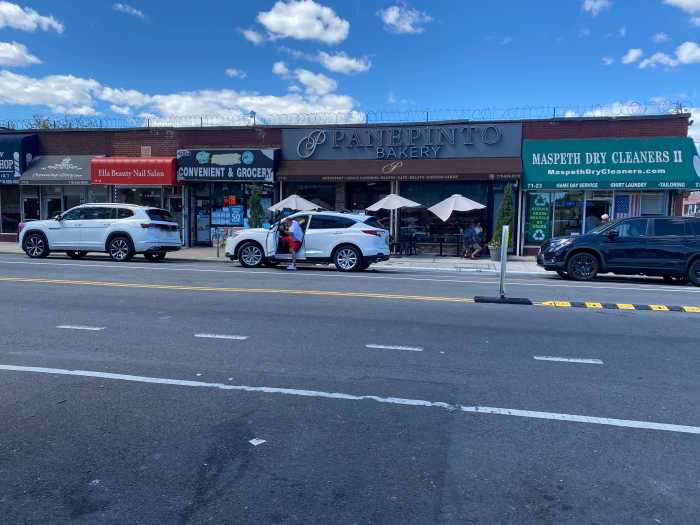
Signs of increased housing development have already appeared along the IBX, including more newly constructed, high-density apartment buildings in East New York. Residents in northern Queens are concerned that similar developments will be constructed in their own neighborhoods, especially along the IBX stops proposed on Grand, Eliot and Metropolitan Avenues.
The neighborhoods surrounding these stops, including Maspeth and Middle Village, have thrived for generations as quiet, small towns within the bustling metropolis of New York. The areas are comprised mostly of one- and two-family homes, many of which have been passed on within families over the course of generations.
Middle Village has just one subway stop: the Metropolitan Avenue station, where the M train terminates. Maspeth has no subway links at all. Buses are the primary mode of public transportation in both neighborhoods.
‘We don’t need any of it’
Many residents who attended Thursday’s meeting—who favor keeping their neighborhoods quiet and small-town in character—voiced their opinions to resounding cheers from the audience.
“We did not request IBX. We had no interest in getting a train to Brooklyn,” one Queens resident said. “I don’t even know anyone in my neighborhood who would want to go to Brooklyn. People don’t need the noise, the fumes. We don’t need any of it.”
She said there are already several bus lines in place that connect Queens communities to Brooklyn, allowing residents to travel to the other borough.
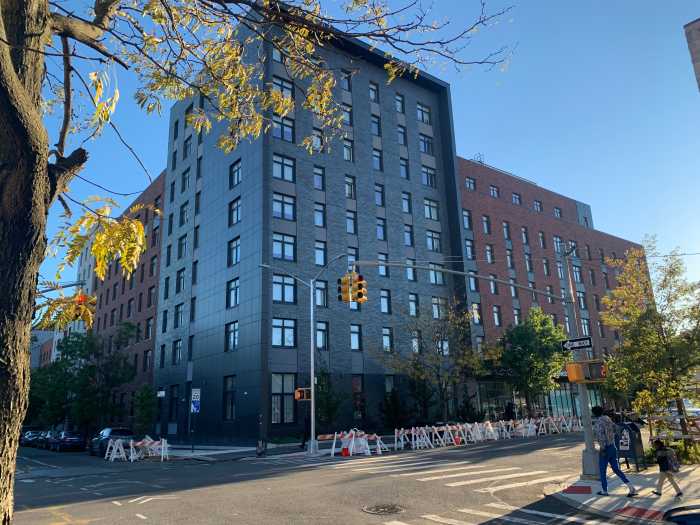
Klea Theoharis of Maspeth even suggested returning the G train to full service. The G is currently the only train that connects the boroughs without going into Manhattan.
“The G train still exists, but now it starts in Long Island City and goes to Brooklyn. Can you just bring it back to the Forest Hills station? There are lots of local stops along the way.”
Bus service in Brooklyn could support a G train extension, she said.
“It has a completely different route than the IBX would have, but if the G train goes through Queens to Brooklyn, from Forest Hills and the goal is to have local stops, perhaps there could be a few extra bus lines in Brooklyn to take the people on to their destinations throughout the borough,” she explained.
Barbara O’Donnell, a homeowner in Middle Village, said she and her neighbors would be “highly impacted” the IBX’s proposed Eliot Avenue stop.
“The avenue is a two-way street. It does not support a gigantic subway station,” she said. “It is around three schools, a church, it’s very quiet at night over there. The train would be coming in and out, which I already deal with the freight trains passing by my house.”
Friends Joi and Claudine, who attended Thursday’s meeting, told amNewYork that communication about the project has allegedly been poor.
“This is obviously coming from Gov. Kathy Hochul. So, where was the input from the actual community?” Joi asked.
She also questioned how well some of their local politicians have been involved in the IBX, particularly in terms of representing the community.
amNewYork contacted state Sen. Joseph Addabbo, who represents a hearty section of the IBX plan in Queens, but did not receive a response.
The IBX ‘will speed up’ commutes
Meanwhile, not everyone at the meeting wanted to shoot down plans for the IBX.
Despite the boisterous opposition, a solid handful of Queens and Brooklyn residents said a light-rail is not only a welcomed asset in NYC, but it will dramatically cut time for anyone commuting between the two outer boroughs for work, school or even recreation.
“We need to have more accessibility for trains and buses,” Christopher Grief, a meeting attendee, said. “The IBX will speed our time not to have to go into Manhattan to get to other parts of Brooklyn. So say if I’m here, I can get on the IBX, take it down to south Brooklyn.”
The MTA says the planned train is expected to have 19 stops along a 14-mile route, connecting Jackson Heights to Bay Ridge. A total one-way trip, hitting all stops, is expected to take around 32 minutes.

The IBX, as currently planned, will have connections to 17 subway lines, over 50 bus routes and a connection to the Long Island Rail Road in East New York at Atlantic Avenue.
“900,000 New Yorkers live along the proposed IBX route, and we’re not going to waste any time advancing this project for them,” MTA Chair and CEO Janno Lieber said. “Launching the State environmental review process gives us the momentum we need to move this transformational effort toward construction.”
Another meeting attendee shared her thoughts on the potential economic benefits of new transportation in the neighborhood.
“I believe this will make our properties more valuable,” she said. “The development of higher-density housing near train stations will add money to the community, benefiting local businesses.”
Balancing more transit with real concerns
Real estate experts have told amNewYork that quieter neighborhoods like Middle Village or Borough Park in Brooklyn might “feel the pinch” of a new rail.
Property values generally rise with transit enhancements, but gentrification could displace longstanding locals, as well, according to Mariya Fuzaylova, a broker at ValueTruth Real Estate.
“Quieter enclaves such as Middle Village or Borough Park might feel the pinch if crowds and noise erode their suburban charm, potentially turning off families who are looking to settle down,” she said.
The MTA’s $68.4 billion 2025-2029 capital plan will pay for about 50% of the ambitious project’s estimated total cost of $5.5 billion.
Whether the train will be a transit boon or a suburban bane remains to be seen.
The MTA has scheduled another meeting on Nov. 12 to discuss the project scope and review process. The meeting will be held virtually, and registration information can be found at mta.info.
Additional information about the IBX project can also be found on the MTA website.
